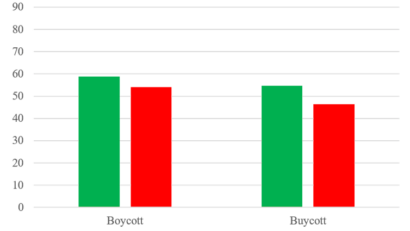Tobacco’s hidden friendly side: how the controversial plant could be used for good
Tobacco kills 8 million people worldwide every year, but imagine if it could be used to make medicine. The idea isn’t unheard of – tobacco has been used as a herbal medicine in the past. But now, in the age of genetic engineering, tobacco may well be the future of pharmaceutical production on Earth and beyond.
European explorers first encountered tobacco in the Americas during the 16th century. There, indigenous people had used it for centuries, either by inhalation, ingestion or topically, as a treatment for any number of illnesses like headaches, colds, sores and stomach upsets.
Tobacco became a panacea in 16th century Europe, prescribed for almost everything. The most bizarre application, however, would probably be as a cure for symptoms of drowning in the 18th century. Tobacco smoke enema kits were kept by the Thames River in London. Should someone fall in, they would be awoken with a shock with one of these kits. The thinking was that the tobacco smoke would provide warmth and stimulation.
Many people think of plants as nice-looking greens. Essential for clean air, yes, but simple organisms. A step change in research is shaking up the way scientists think about plants: they are far more complex and more like us than you might imagine. This blossoming field of science is too delightful to do it justice in one or two stories.
This story is part of a series, Plant Curious, exploring scientific studies that challenge the way you view plantlife.
While there is little evidence for tobacco being inherently medicinal, its harmfulness was observed even in the 18th century.
A lot of our modern medications come from plants, like the cancer chemotherapy Taxol from yew trees, or the heart medication Digoxin from fox gloves. These medications are tiny molecules. But if we want anything more complicated, like a protein-based pharmaceutical such as insulin or a vaccine, the equipment involved becomes a lot more technical.
Most of these more complex medications are the product of a kind of genetic engineering called recombinant technology. The genetic material required to make, for instance, insulin, is combined with a cell’s genetic material. That cell (which can be bacteria, yeast or animal cells) will now produce the insulin along with all its own proteins. It’s much like when a child stealthily slips a chocolate bar in with the rest of their parent’s shopping.
The technology is extraordinarily expensive (around US$2 billion, or £1.5 billion) because of the huge vats or bioreactors needed to grow recombinant cells in sterile conditions. This makes access to these kinds of pharmaceuticals difficult for low-income countries.
This is where tobacco could make a difference. Much like the recombinant cells we currently use, plants can also be genetically engineered to produce pharmaceuticals. Plants, however, only need soil, water and sunlight to grow. Tobacco is the largest leafy non-food crop. It is very amenable to genetic modification, and is an absolute power-house when it comes to producing proteins, be it their own or the ones we’ve introduced. This combined with their high biomass makes them the most prolific plant for pharmaceutical production.
It may be indigenous to the Americas and Australia, but it is a resilient plant and can be grown all over the world. Thanks to its ease of genetic modification, tobacco can become even more resilient by making it drought-resistant.
This idea of molecular farming is still new, but is starting to gain traction. In 2012 the Canadian company Medicago demonstrated the speed of tobacco as a production platform. They used tobacco to produce more than 10 million doses of the influenza vaccine in one month. Given that globally we can produce 40 million doses of the vaccine per month, this achievement was ground-breaking.
Tobacco is resilient and fast growing.
Attasit saentep/Shutterstock
There are several clinical trials underway looking at tobacco-produced immunotherapies for diseases like HIV, and even Ebola virus disease. One treatment already received emergency use status in the US for returning healthcare workers during the 2014 Ebola virus outbreak. These diseases disproportionately affect low-income countries and tobacco is grown predominantly in these countries already.
Tobacco is even being used to produce cancer immunotherapies. These cancer treatments work by boosting our own immune systems to fight off cancer cells, with few side-effects compared to traditional chemotherapy. They are, however, prohibitively expensive, so this platform could make them more accessible.
Smoking has caused a great deal of harm worldwide, but its decline in popularity is going to cause a new problem: tobacco farmers in low-income countries will lose their livelihoods. So why not repurpose these crops?
Drugs on Mars
Oscar Wilde once wrote “every saint has a past, and every sinner has a future”. So what is the future of tobacco?
Thinking beyond Earth, if we plan to visit or colonise other planets, we are going to need medications while we’re there. Tobacco can grow all over the world, why not on Mars too? A packet of tobacco seeds would take up much less room on a rocket than a five years’ supply of insulin, or an entire bioreactor facility for that matter. Plus, the tobacco is an infinite source – collect the seeds and re-plant.
Before we head off to Mars, though, we should address the problems here on Earth, and sustainability is a big one. Plants that we extract medicines from today, such as yew trees, are becoming endangered.
An emerging field is engineering tobacco to have it produce the same medications we typically extract from these plants. Not only that, but we can also produce expensive spices like saffron, or flavours such as raspberry, at a fraction of the cost. Not even the sky is the limit for tobacco’s potential. Läs mer…








